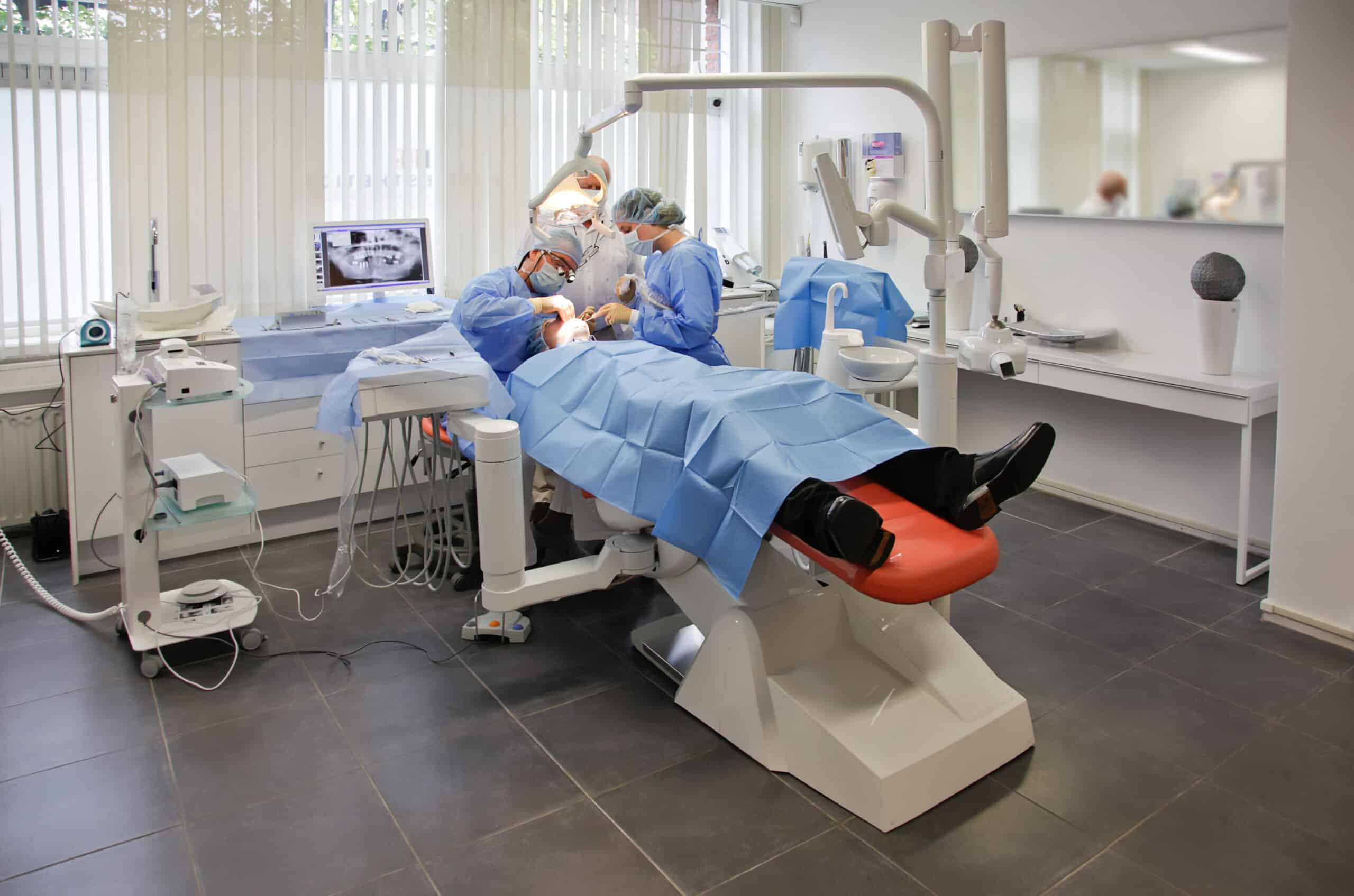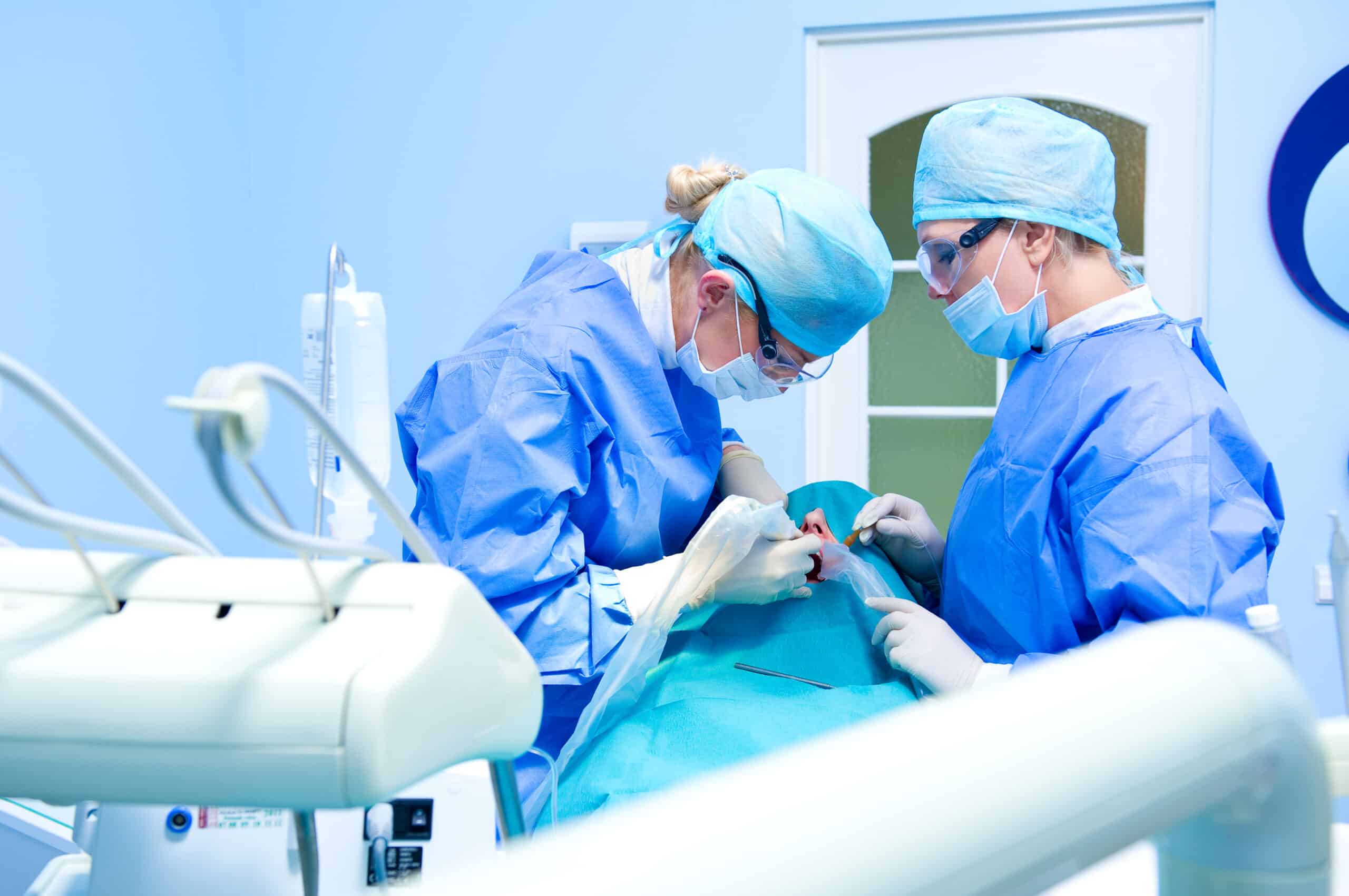It is possible to cure periodontitis and, in fact, there are several ways to carry out periodontal treatment.
Whatever it is, the truth is that it must be carried out in a very meticulous manner and must contemplate a periodic follow-up of the patient’s condition in order to avoid recurrence.
Keep in mind that periodontitis, in addition to being degenerative, is a chronic disease.
As a consequence, it becomes increasingly aggressive and tends to recur over time if we do not have an effective treatment.
What is periodontitis?
Periodontitis – also called pyorrhea – is one of the so-called periodontal diseases, pathologies that affect the gums.
More specifically, we can specify that there are two periodontal diseases: gingivitis and periodontitis.
Gingivitis is a pathology that occurs due to insufficient oral hygiene.
As a result, bacterial plaque appears on the teeth, which solidifies and turns into tartar.
The most characteristic symptoms of gingivitis are usually swollen and bleeding gums.
If this gingivitis is not treated, it will lead to periodontitis, a more advanced stage of the pathology and much more serious.
Moreover, it can only be cured by visiting a dental clinic, as there is no home treatment that can eradicate pyorrhea.
Advanced pyorrhea
Enlarge image
ADVANCED PYORRHEA
What are the consequences of periodontitis?
If pyorrhea is not treated properly, it causes irreversible problems to the gums, teeth and the bone supporting the teeth.
Among these problems, the most serious is the loss of teeth, since they fall out as they lose the support on which they were held.
Hence the importance of treating advanced periodontitis as soon as possible and as soon as it is diagnosed.
To combat pyorrhea it is essential to carry out an exhaustive preliminary study based on X-rays, tartar measurements and samples of the periodontal pockets.
What does periodontal treatment consist of?
At DrAW Dental Clinic, periodontal treatment is carried out by dentists specialized in Periodontics, so it is a very complete procedure that consists of several phases:
Periodontal study
The first study consists of taking dental x-rays, as well as measuring the depth of the tartar lodged inside the gums.
Thus, the periodontist is able to determine the degree of the disease and establish a diagnosis for each affected tooth.
The measurements are carried out using a program called Florida Probe, which records the amount of subgingival calculus.
But, in addition, this computer software records whether bleeding occurs, as well as a series of personal information about the patient that affects the development of pyorrhea: hereditary factors, whether or not he or she smokes…
This graphic representation of the state of the gums shows three colors, according to the state of the tissue.
Yellow indicates that the probing depth is greater than 5 millimeters, red that it is between 4 and 5 and, finally, black represents a depth of between 1 and 3 millimeters.
Bleeding gums are represented by a red diamond on each tooth.
Measurements with the Florida Probe are taken both at the beginning and at the end of periodontal treatment.
Florida Probe
Enlarge image
PERIODONTOGRAM
Microbiological study
As we have said, periodontitis is caused by the presence of pathogens in our mouth.
For this reason, and in order to determine exactly what the bacteria are, the dentist takes a sample of the periodontal pockets for analysis.
This consists of obtaining a small sample of crevicular fluid, which is found between the tooth and the gum, with a piece of paper.
Through this study, it is possible to detect six types of bacteria, two of which are the most dangerous for the gums.
Thus, if we find aggregatibacter actinomycetemcomitans, porphyromonas gingivalis or both, we will know the severity of the disease.
This step is fundamental, because only by knowing which bacteria are damaging our gums is it possible to prescribe a really effective and adequate antibiotic.
Scaling and root planing
Scaling and root planing is a very deep periodontal cleaning process that removes the solidified bacterial plaque accumulated under the gums.
To do this, the periodontist uses an instrument called a curette, with which it is possible to access the nooks and crannies of the mouth.
For this reason, this process is also commonly known as dental curettage.
When the depth of tartar is very pronounced, gaps form between the gum and the tooth, called periodontal pockets.
When cleaning these pockets, the periodontist relies on the references entered into the Florida Probe software.
Therefore, the scaling that we perform in our clinic is very carefully measured and planned.
Scaling and root planing is painless for the patient, as it is performed under the effects of local anesthesia or with nitrous oxide -also called “laughing gas”-.
To facilitate the postoperative period and the patient’s recovery, at DrAW Dental Clinic we perform curettage in two sessions, each lasting 1 hour.
That is, we divide the mouth into two quadrants to reduce the possible discomfort that may be experienced.
After both appointments, our professionals will explain how the patient’s oral hygiene should be to avoid future recurrence of periodontitis.
Therefore, what we will do will be to provide the person with specific hygiene instructions for their case.
WE TREAT YOUR PERIODONTITIS
Re-evaluation
Between four and six weeks after the treatment, we will visit the patient again to take new measurements of the tartar lodged in the gums and to check the state of their oral health.
Since we have some initial records, we can compare both measurements and determine the success of the treatment.
The probing we perform at this appointment will also be recorded for further check-ups.
Follow-up
Once the periodontitis has been eradicated, we schedule a periodontal maintenance plan and check-ups to prevent recurrence.
These check-ups are usually scheduled every four to six months and they check if gum recession has occurred, the amount of plaque, the state of the gums…
Don’t forget the check-ups
In the treatment of periodontitis, the subsequent follow-up is as important as the curettage itself. If the patient does not attend check-ups, pyorrhea will reappear.
The cost of periodontal treatment
Each person can present periodontitis at a different stage, i.e. it does not necessarily have to have the same depth in all the teeth or in the whole mouth.
Therefore, it is essential to check the depth of tartar and see how many teeth are affected by bacteria.
Depending on the oral health of each person, it may be necessary to perform periodontal treatment in more or less areas.
Even so, we can say that in DrAW Dental Clinic we perform periodontal treatment from a price of 440 €.
However, the best way to get all the information regarding the price of this intervention, is to go to a free first visit.
In this way, our doctors, specialists in periodontics, will be able to determine the depth of the tartar and the progress of the periodontal disease.
Ultimately, this is the aspect on which the total cost of the treatment depends.
Periodontitis treatment
Enlarge image
PERIODONTICIST
Will periodontal treatment be enough?
In most cases, pyorrhea is cured with the periodontal treatment described above.
However, on some occasions, periodontitis has advanced so far that it cannot be eliminated by this intervention.
If this happens, it means that the tartar deposits are already too deep to be cleaned with a curette.
In this situation, periodontal access surgery is indicated.
Therefore, it is advisable to avoid reaching this point where pyorrhea is so advanced that periodontal surgery is necessary.
If you think you may have any signs of gingivitis, either because you have swollen gums or bleeding when brushing, go for a check-up.
This way, professionals will be able to give you guidelines to reverse its effects before you develop pyorrhea and not have to resort to other more invasive treatments.
In this way, we not only ensure the correct and rapid elimination of the disease.
In addition, we prevent periodontitis from reappearing over time.
Given the chronic nature of this pathology, recurrence is very common if pyorrhea is not completely eradicated.



